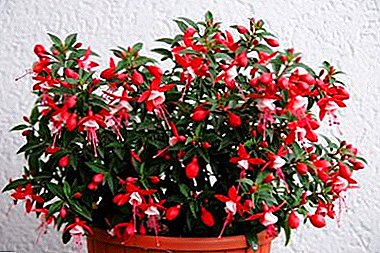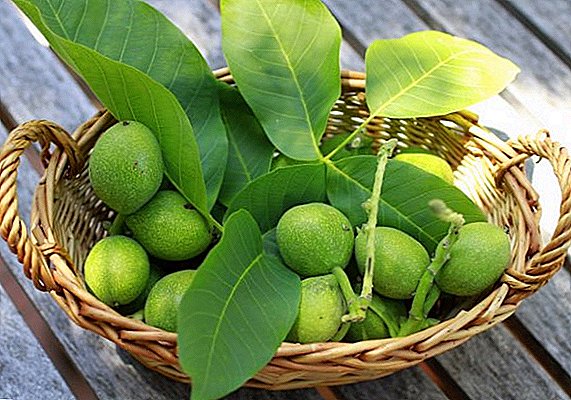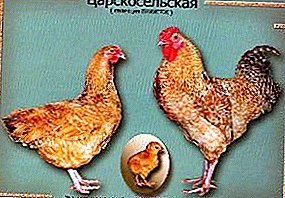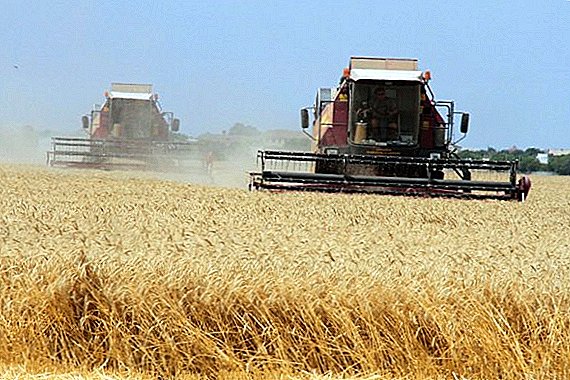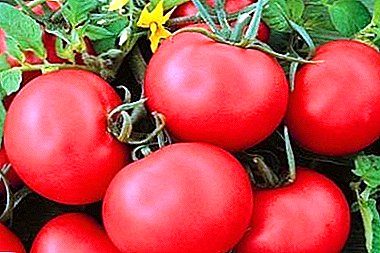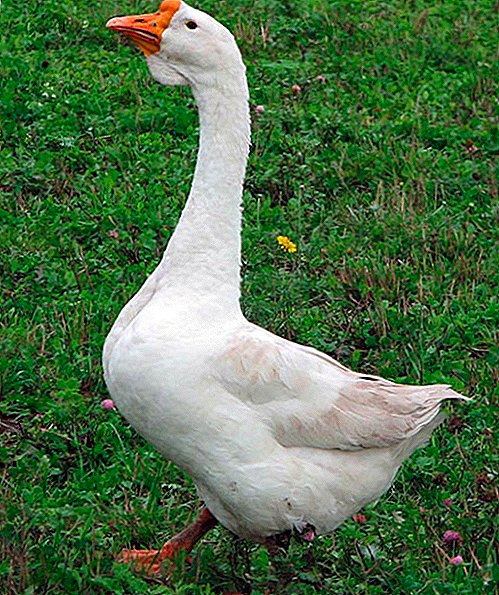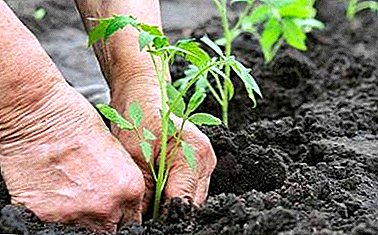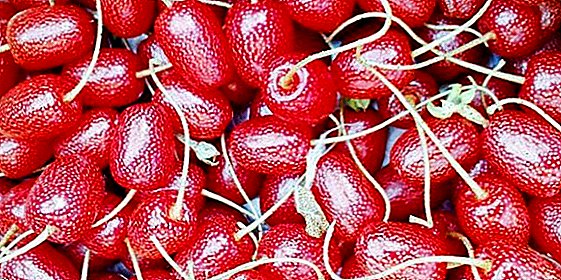
Pear "Muscovite" without exaggeration can be called one of the most popular varieties.
She is enough unpretentious, hardy and meets all the best qualities of the fruit tree.
Knowing the characteristics of the variety and providing it with all the necessary conditions, it is possible to get worthy harvests of delicious pears called "Muscovite" every year.
What kind of pears refers?
Pear "Muscovite" - this dessert variety with autumnal fruit ripening. Thanks precociousness, excellent presentation, good keeping quality and other qualities, it is very popular with gardeners.
Purpose of the fruit "Muscovites" universal. They are very tasty fresh and good for making compotes, jams, jams, marmalade, candied fruits and dried fruits.
Versatility also distinguishes Dessert Rossoshanskaya, Krasulya, Hera, Faithful and Forest Beauty.
Breeding history and breeding region
"Muscovite" is the result of the breeding work of the Moscow Agricultural Timiryazev Academy. It was isolated from pear seedlings obtained by free pollination of an American variety called "kieffer".
is he recommended for cultivation in the Volga-Vyatka, Middle Volga and Central regions of Russia. "Muscovite" was widely spread in the gardens of the Moscow region.
Pear "Muscovite": description of the variety and photos
 Pear trees varieties "Muscovite" possess medium size and standard shape with a thick crown and medium foliage.
Pear trees varieties "Muscovite" possess medium size and standard shape with a thick crown and medium foliage.
Young trees "Muscovites" have a funnel-shaped crownwhich as they grow older becomes conical.
Gray color tree trunk, but bark skeletal branches growing in an oblique-vertical direction, light gray.
Variety "Muscovite" has a good ability to form shoots. They have a curved shape, medium length and diameter.. On shoots in sufficient quantities there are small convex lentils. The internodes on the branches are of standard length, the cone-shaped buds are brown.
Small-sized pear leaves have an oval shape. with notches on the edges. Leaf plate leathery, without pubescence and slightly curved in the center. Flowers pears simple cupped with a white whisk. From 5 to 7 flowers are collected in racemes. Fruits of a tree are formed on spears, fruit twigs, rings of different ages and annual shoots from lateral and apical buds.
Average weight of one pear "Muscovite" - from 120 to 130 g. Some specimens can reach 200 g and even a little more. The shape of the fruit is wide.Under the yellowish-green skin are seen subcutaneous points. Often the skin is covered with pronounced rustiness in the form of large spots. Cover blush is absent.
White fruit pulp juicy with a dense semi-oily structure and granulations around the heart. "Muscovite" has a very pleasant sour-sweet taste with a pronounced fragrant aroma. Tasting assessment pears "Muscovite" - 4.3 points, sugar content fruits 9,5 %, but acidity - 0,48 %.
Photo varieties of pears "Muscovite":



Specifications
Variety is wonderful stable and high yields even under adverse conditions. One tree can give up to 50 kg juicy and fragrant fruits. Pear fruit "Muscovite" starts on the 4thsometimes on 3rd year after landing. Harvest ripens by mid-September or a little earlier. It should be said that when ripe, fruits almost do not crumble.
Ripeness fruits can be identified by the appearance on the skin slight yellowing. For longer storage pIt is recommended to shoot the fruit until a sign of maturity appears.when the skin is still light green.
In the room fruits ripen during the week, becoming very juicy and tasty, after which it can be saved for about ten days. In the basement pears are stored without damage to consumer qualities from 3 to 4 weeks, and in a refrigerator at zero temperature - up to 3 months.
Variety has a very good endurance, not afraid of changes in temperature and gives stable yields in any weather. but winter hardiness "Muscovites" slightly above averagetherefore, in the middle latitudes of Russia, it needs winter warming.
Self-infertile variety "Muscovite" needs pollination. The best pollinator varieties for this pear: Lada, Elegant Efimova, Moscow Bergamot, Marble, Yakovlev Favorite.
Planting and care
 Pear follows land in the fall in early October or spring late April-early May. When planting "Muscovites" should take care that pollinating varieties grew near it.
Pear follows land in the fall in early October or spring late April-early May. When planting "Muscovites" should take care that pollinating varieties grew near it.
Pear requires a well-lit, flat and dry place. The more sun the fruits of the tree receive, the tastier and sweeter they become.
Plant does not like stagnant moisture in the soil. Groundwater the area should be at depth not less than 2.5 meters from the groundotherwise the pear will not be able to develop and will perish.
Pear trees prefer to grow on sandy-chernozem or loamy lands pH acidity from 5.6 to 6.0. Sandy soil is also good.but in this case need more care, as well as active and regular fertilization. Clay soils undesirable for pears. For planting in such land need a large landing pit with a suitable primer.
The landing pit must be prepared in advance, at least a couple of weeks before the intended landing. For planting seedlings in the spring pit is best prepared in the fall. Its optimal size - from 1 to 1.2 m in depth and around 80 cm in diameter.
When digging a hole top sod layer (about 30 cm) fold to one side, but the rest of the land is in another. Next, the pit is filled with fertile soil.
For its preparation, the removed horseback turf ground must be mixed with 3 buckets manure or vegetable humus, a couple of buckets of sand, a glass of superphosphate, 3 tablespoons of potassium sulfate and 1 kg of any organic matter. Next, fill the pit with improved earth and then pour in a solution of dolomite flour (400 g per 10 liters of water). Finally poured a couple buckets of water and 10-14 days or until the spring leaves the pit in this form.
Important - Before planting work on a sapling cut off most of the leaves, leaving only a few leaves on each branch. Leaves evaporate a lot of moisture, but the roots at a young tree work is still very weak.
 Planting pear seedlings is carried out as follows:
Planting pear seedlings is carried out as follows:
- Most often planted pears. When buying a tree is recommended immediately produce pruning, but in no case can not cut the roots. One day before planting seedling roots are soaked in water or the solution of mullein;
- First, a peg is driven into the central part of the pit so that it rises above the ground surface by about 50 cm. Next, pour a mound of earth into the pit and place a seedling on it, smoothing the roots evenly. All work is best done with an assistant who will support the tree;
- Pit with a seedling poured the rest of the land without fertilizer. At the same time, the young pear is slightly shaken so that the earth can fill the voids between the roots. When landing root neck should be located 5 or 7 cm above ground level;
- Planting a tree, neatly tamp the ground with their feet, shed it with 3 buckets of water, and then mulch the pristvolny circle with dry humus. Planting work end up tying up the seedling to the peg.
To care, "Muscovite" is not very demanding. An important condition for proper development is regular loosening of the earth around the tree.
First loosening to a depth of about 15 cm conducted directly after landing. Pristvolny circle should always be kept clean and mulch with peat, humus or manure. It is necessary to remove weeds and various garbage in time..
Water pear necessary once a week at the rate of 10 liters of water on one tree in the morning and the same amount in the evening. Especially sufficient watering is important for pears with July to Augustwhen it bears fruit and when buds of the next harvest are laid on the trees. Irrigation mode is adjusted depending on weather conditions.. WITH September watering stops.
 Feeding pears can begin the next year after planting. Every spring the tree is fertilized with ammonium nitrate on the basis of 20 g per 1 sq. M wheel circle.
Feeding pears can begin the next year after planting. Every spring the tree is fertilized with ammonium nitrate on the basis of 20 g per 1 sq. M wheel circle.
Organic fertilizers should be applied every three years in the fall. - on 1 sq. m on 50 g superphosphate, half a bucket of compost or humus and 20 g of potassium sulfate.
Important - In the first season after planting it is recommended to remove all the inflorescences from the seedling., so that the tree better settled down.
During the growing season pear needs pruning. It is necessary to do in early spring before the start of bud break. When planting, the branches of young saplings are cut by a third so that they can lay the crown faster.
Shoots are leveled as they grow, while maintaining the leading position of the center conductor. Cropped branches growing inside, curves and weak shoots, tops. If the crown is damaged by freezing, strong tops are left and used to replace fruit-bearing branches.
The important point is when pruning is removed no more than a quarter of the total number of branchesIn order not to expose the tree to great stress.If the branch of an adult tree is removed completely, the cut should be made at the base (on the ring) - leave hemp is not desirable.
"Muscovite" is enough cold resistant. However, to protect against too low temperatures for the winter, it is necessary to mulch the tree trunk with horse humus. Shtamb should be wrapped with insulating material that allows air to pass through.. To combat hares and mice below part of the trunk is best covered with a special net or coniferous branches tops down.
There are other frost-resistant varieties: Nika, Samara Beauty, Svarog, Seredyanka Krasnoshchekaya and Uralochka.
Diseases and pests
Pear "Muscovite" distinguished by high resistance to fruit rot and scab. To protect the variety from septoriosis, rust and bacterial cancer, at least three complex wood treatments are carried out. Are used Bordeaux liquid or strong drugs like "Skor", "Azofos", "Chorus", "Pennkotseb", "Delan" and etc.
In the spring or late fall, it is advisable to carry out eradication spraying trees urea solution (from 800 to 900 g per 10 liters of water). For fungal disease prevention before budding trees treated with copper or iron sulphate solution.
There are varieties that are resistant to scab: Limonka, Lyra, Northerner red-cheeked, Moscow early and Orlovskaya beauty, for example.
 The most common pests of pear - pear sucker, leafworm, green aphid, pear mite, pear moth. The fight against pests requires an individual approach:
The most common pests of pear - pear sucker, leafworm, green aphid, pear mite, pear moth. The fight against pests requires an individual approach:
- Green aphid. Conducted threefold spraying plants: in early spring - Kinmiksom, before flowering - "Agravertin", with the appearance of the ovaries - Iskra. Very effective and popular methods: green soap, garlic and chamomile broths;
- Pear moth. Destroyed by treatments with the drug "Agravertin" before and immediately after flowering. Next, three weeks after ottsvetaniya used "Kinmiks";
- Pear Copper. Trees are sprayed before blooming flowers "Karbofos", after the end of flowering - "Agravertin" or "Iskra." The larvae of the sucker can be destroyed with the help of decoctions of tobacco dust, dandelion, yarrow, chamomile;
- Pear mite. Destroyed by treating the trees with a solution colloidal sulfur.
- Sheet wrench. The appearance of this insect prevents the trees from spraying with the “Tsimbush” preparation before flowering.
In early spring, all wounds of a tree and frost damage should be healed. It is necessary to remove diseased and mutilated branches and to clear the stumps and skeletal branches from the old bark..
During fruiting necessarily collected and destroyed worms. Autumn should be cleaned again. stumps and branches from exfoliated bark, collect and burn all the fallen leaves, whitewash the trunk, as well as the base of the skeletal branches.
Pear "Muscovite" has excellent characteristics and is worthy of becoming your favorite fruit tree. With proper care, it can give you a rich harvest of healthy and tasty fruits - a storehouse of vitamins and minerals.


